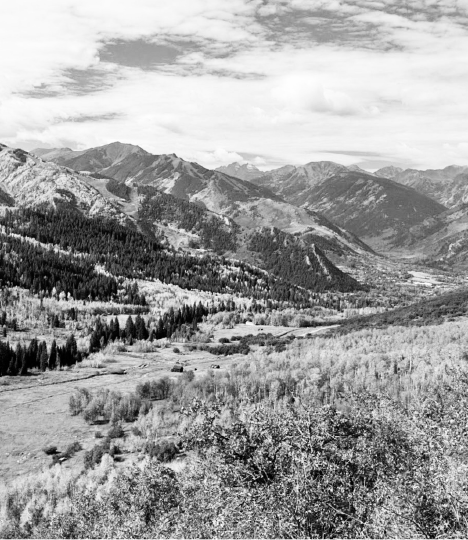
Hunter Creek’s historic Koch dairy
by Dale Will
Few today know the origins of a group of historic structures that grace the lower meadows of the Hunter Creek Valley. It is therefore ironic that this enterprise was arguably a prerequisite for virtually everything else that happened in Aspen.
Henry Stats reported that during 1879-1880 the population of “Ute City (Aspen) and the Hunter Creek Valley (was) 13.” With only 13 souls present, the fortunes of each were inextricable. William C. Koch arrived in 1881, perhaps the first immigrant to look for the best spot to raise food, rather than digging ore. Koch must have arrived with some means, as he hired one Mr. Edward F. Reynolds to construct a group of buildings on his homestead on the level and verdant grounds of Hunter Creek. The Rocky Mountain Sun reported in February of 1887 these buildings were completed. Come summer, a dairy was officially started at the homestead, an event of enough significance to again be reported by the papers. It would be named the Adelaide Ranch.
One can only imagine how this initiative might have improved the diets of prospectors scrapping away in the mines of Ajax and Smuggler. The only alternative food sources involved either hunting, or mule trains from the east. In 1895 a history of Colorado was assembled to capture the progress of a State not yet 20. The work features a beautiful illustration of the Koch’s farm showing the ranch house and various outbuildings set amidst cultivated fields. William Koch was fully committed to this spot; he buried his first born there in 1889.
By 1890, the population of Pitkin County had swollen to 8929, a nearly seven hundred fold increase in a scant 10 years. During this initial decade of the valley settlement, the first ranches such as the Adelaide were a critical source of sustenance. With the arrival of the Rio Grande Railroad in 1889, this dependency was somewhat relieved, but the local farms and ranches continued to be a mainstay of local nutrition into the industrial era.
Over time, settlement progressed to the lower elevations of the Roaring Fork Valley, where conditions were somewhat more hospitable for agricultural production. By 1945, when this photograph was taken, the Adelaide had become fallow. Some thirty years later, this property was reacquired as public land as part of the White River National Forest. Since that time, the ongoing weathering has taken its toll. In 1990, the USFS undertook an extensive inventory of the cultural resources of the Hunter Creek Valley, including Koch’s homestead. However, resource constraints have prevented any significant action to protect the buildings. While a few remain standing, help is needed to stabilize these structures, to document their history, and to ensure that they remain as testaments to the entrepreneurial spirit of the valley’s first residents of European descent. As perhaps the first farm in the Roaring Fork Valley, the historic significance of Koch’s Adelaide Farm can hardly be overstated.



